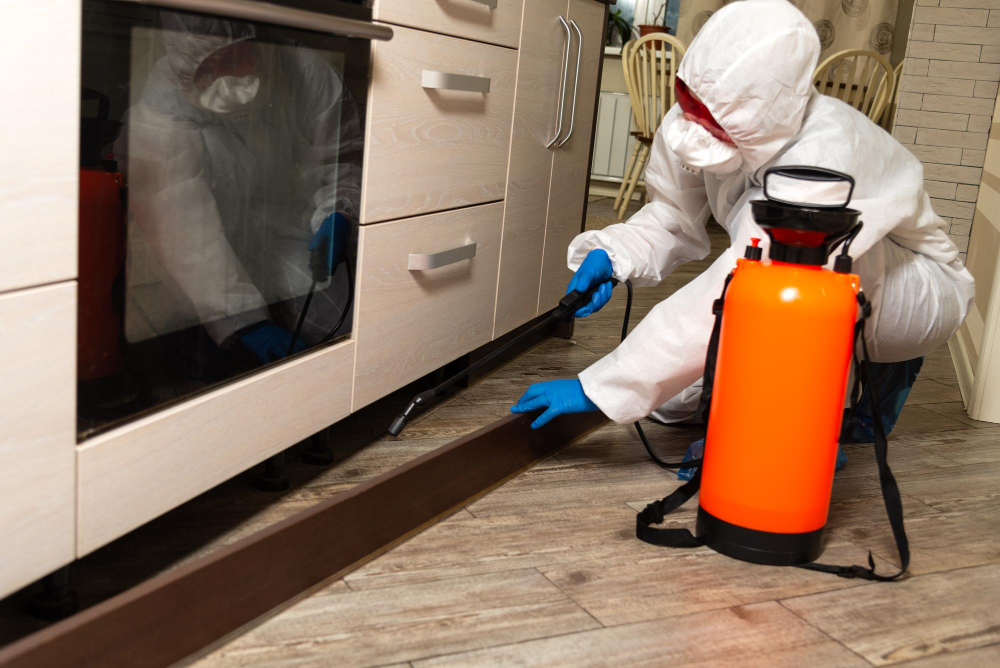Localized Termite Infestation: Some of the Best Termite Control Techniques to Try

One of the first reasons why termites are scary is because they are silent invaders. According to the National Pest Management Association, termite infestations can go undetected for years. Imagine waking up one day to find your beautiful wooden floor sagging or your walls riddled with tiny holes. It is the stuff of nightmares.
It would be best to find the termite infestation at an early stage and get it treated. Local termite treatments are available for localized infestations which might be recommended by the termite control professional after he inspects your home. Regular termite inspection is key to keeping your property safe from these little invaders.
Treatments for Localized Termite Infestations
Termite inspections should be scheduled regularly, ideally twice a year. But if you notice any signs of an infestation or suspect it, then you must schedule the inspection immediately.
Once the termite inspector inspects the home and finds the termite infestation, he will suggest a suitable termite treatment method that will eliminate the infestation.
For widespread infestation, treatment methods like liquid barrier treatment, bait stations, and fumigation are recommended. But if the infestation is localized to one or two spots, then the following methods might be suggested.
Direct Wood Treatment
Direct wood treatment refers to treating the infested wood directly with a product that is formulated to eliminate termites. This type of treatment works for both subterranean and drywood termites.
To begin with, the extent of the infestation is checked. If the infestation is widespread and in multiple inaccessible places, then it is best to choose an alternate method.
In this treatment, the infested wood is drilled with holes into which the termite control product, the usually liquid termiticide is applied under pressure. The product will permeate through the hole and the natural crevices in the wood. When the termites come in contact with the termiticide, they get poisoned and die. If you are planning to prevent further infestations, then you can also choose surface application of termiticides.
Heat Treatment
If you want to choose a treatment method with no chemicals involved, then heat treatment is a great choice. Heat treatment can help eliminate all types of termites and is suitable for both localized and widespread infestations.
Heat treatment is a quick method that can be done within a day. It is considered a good alternative to fumigation in some cases. For example, if the house is small and the infestation is limited to certain areas, heat treatment would be better but if the infestation is in places like boards and ducts, then fumigation is recommended over heat treatment.
For this method, first, the heat-sensitive things should be removed from the home. Then, a tent is erected around the structure and the temperature inside the tent is raised to at least 130°C for around 1.5 to 2 hours. The high temperature will kill the termites along with the eggs.
Also Read: How to Choose the Right Termite Treatment
Microwave Treatment
Microwave termite treatment is similar to heat treatment since it does not use chemicals. This method can even treat termite infestations localized to a single spot.
This method involves using microwave radiation to target and eliminate the termites and is greatly effective against drywood termites. The experts use microwave generators to emit microwaves which are targeted at the infested wood. The waves penetrate the infested area and raise the temperature to levels that would immediately kill the termites.
HiTech Termite Control
Termites might be tiny but they work tirelessly and eat away your home in no time. By recognizing the signs of an infestation and choosing the right control methods, you can protect your home from these destructive pests. Book a termite inspection for your property by visiting our site here
Frequently Asked Questions
Why are termites considered silent invaders?
Termites can go undetected for years, causing significant damage without being noticed until it’s too late, such as when wooden floors sag or walls show tiny holes.
How often should termite inspections be scheduled?
Ideally, termite inspections should be done twice a year. If you notice any signs of infestation, schedule an inspection immediately.
What is direct wood treatment for termites?
Direct wood treatment involves drilling holes into infested wood and applying a liquid termiticide, which poisons and kills the termites upon contact.
How does heat treatment work for termite infestations?
Heat treatment raises the temperature inside a tented structure to at least 130°C for 1.5 to 2 hours, killing termites and their eggs without using chemicals.
What is microwave treatment for termites?
Microwave treatment uses microwave radiation to heat infested wood, raising the temperature to a level that kills termites instantly. It’s effective for localized infestations.
What are some signs of a termite infestation?
Signs include sagging wooden floors, tiny holes in walls, piles of frass (sawdust-like material), and discarded wings near light fixtures. If you notice any of these, schedule an inspection right away.
- Jun 04, 2024
